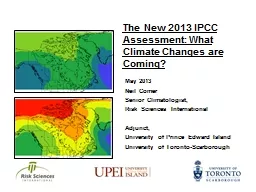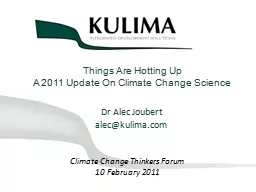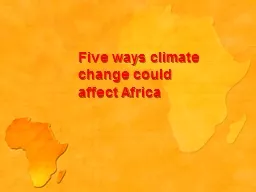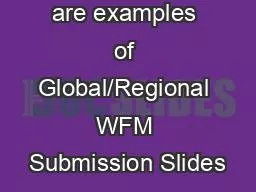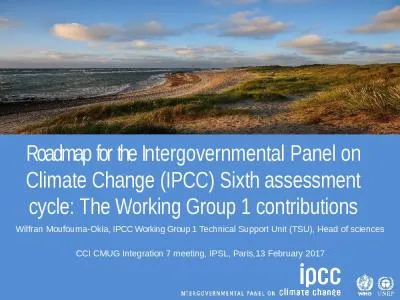PPT-AFRICA SLIDES IMPACTS Key Impacts Identified in IPCC AR5
Author : freakapple | Published Date : 2020-10-06
Shifts in biome distribution impacts on wildlife and extinction Increased stress on water resources Degradation of coral reefs loss of ecosystems and fish stocks
Presentation Embed Code
Download Presentation
Download Presentation The PPT/PDF document "AFRICA SLIDES IMPACTS Key Impacts Identi..." is the property of its rightful owner. Permission is granted to download and print the materials on this website for personal, non-commercial use only, and to display it on your personal computer provided you do not modify the materials and that you retain all copyright notices contained in the materials. By downloading content from our website, you accept the terms of this agreement.
AFRICA SLIDES IMPACTS Key Impacts Identified in IPCC AR5: Transcript
Download Rules Of Document
"AFRICA SLIDES IMPACTS Key Impacts Identified in IPCC AR5"The content belongs to its owner. You may download and print it for personal use, without modification, and keep all copyright notices. By downloading, you agree to these terms.
Related Documents



